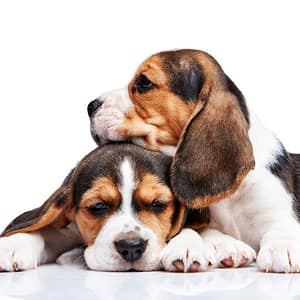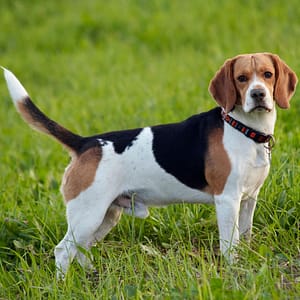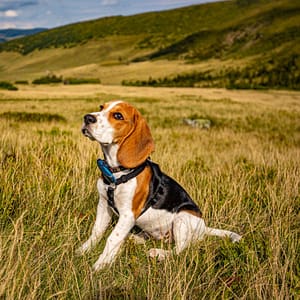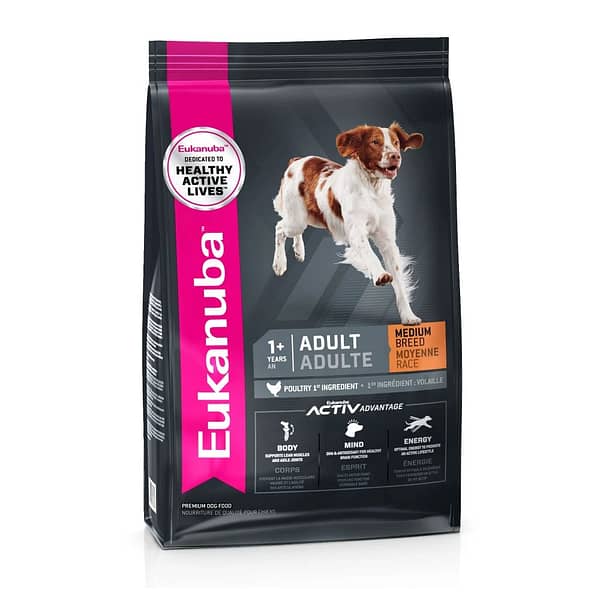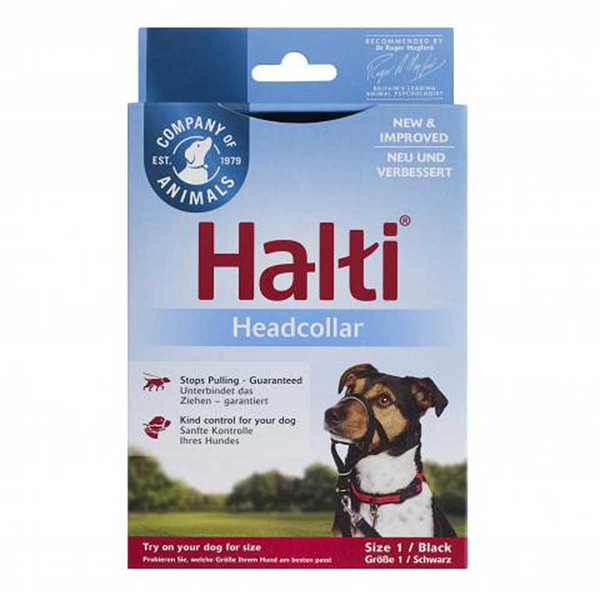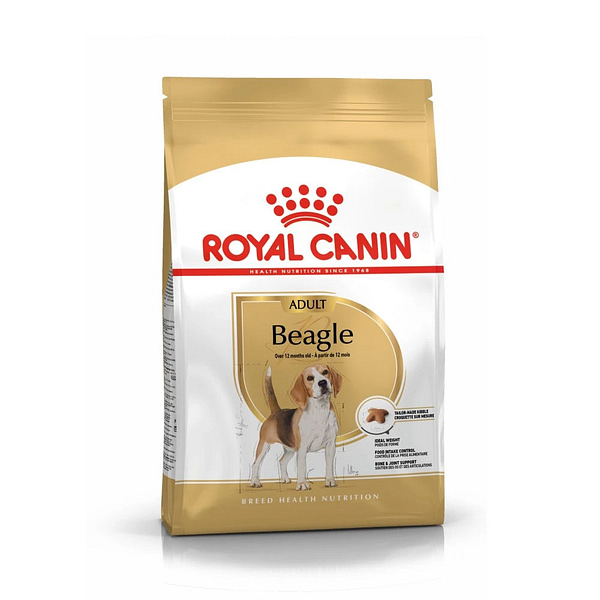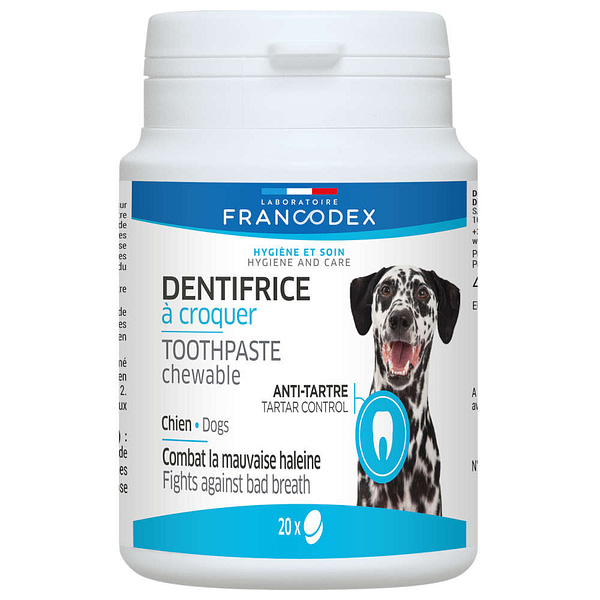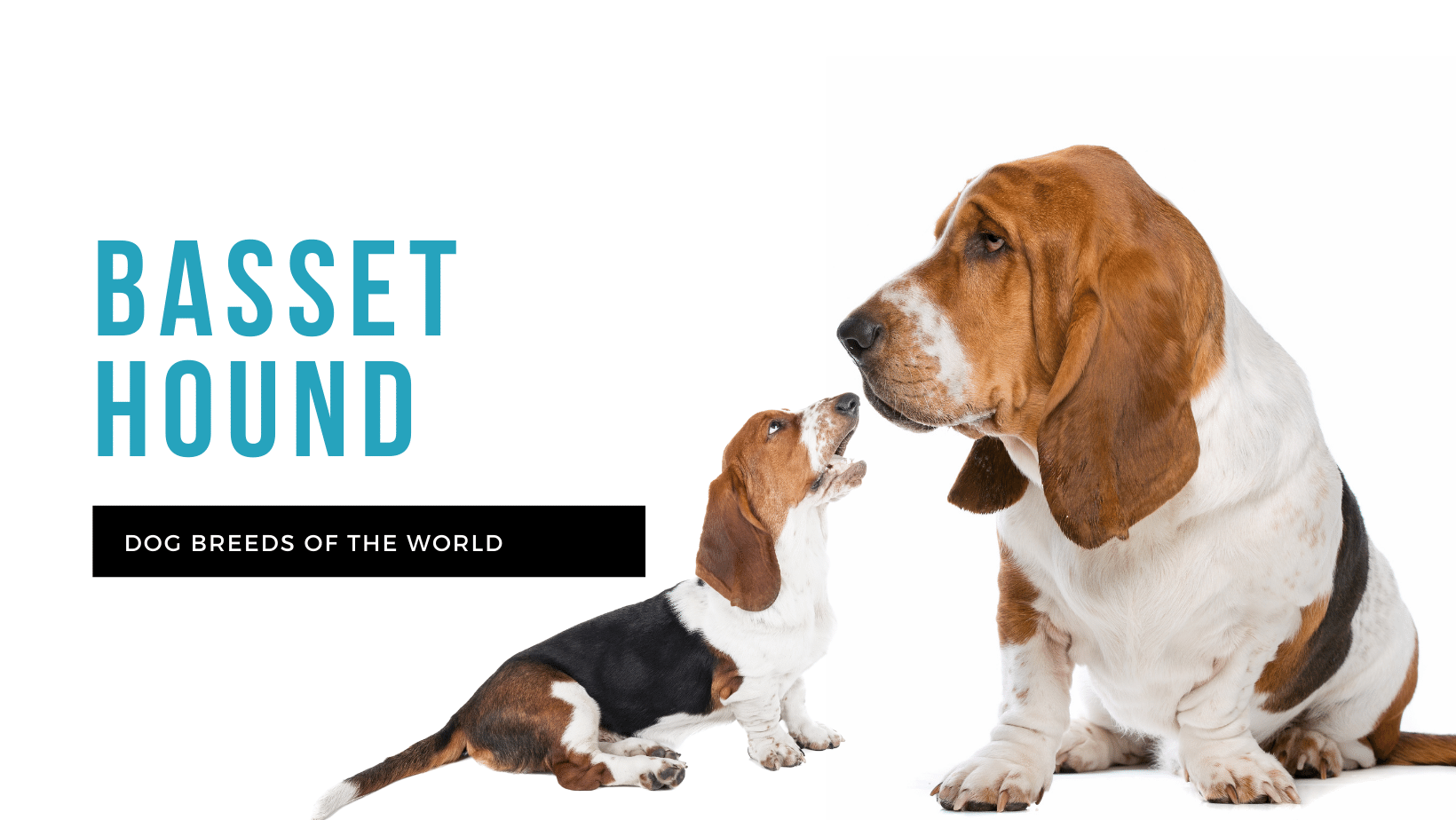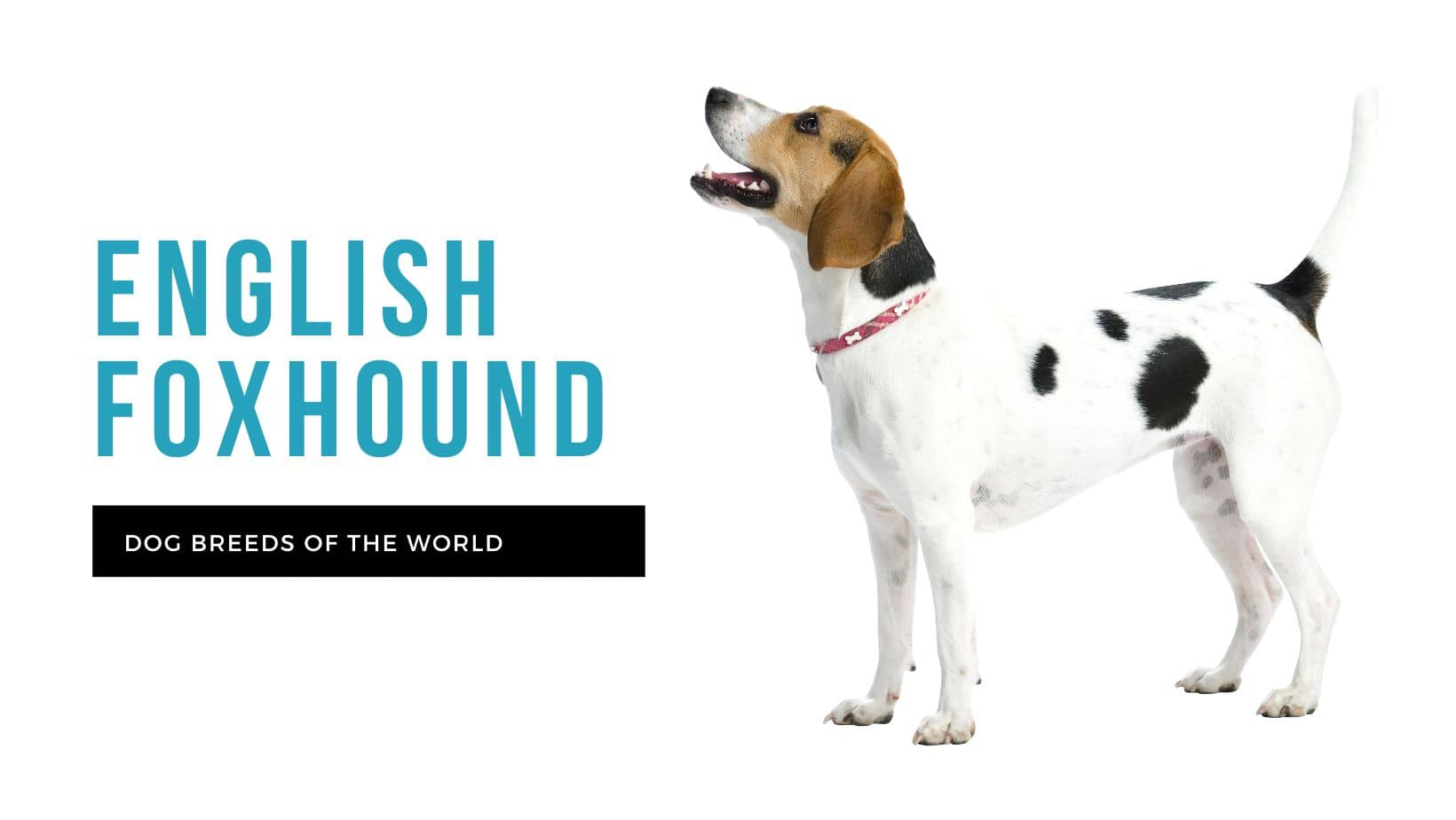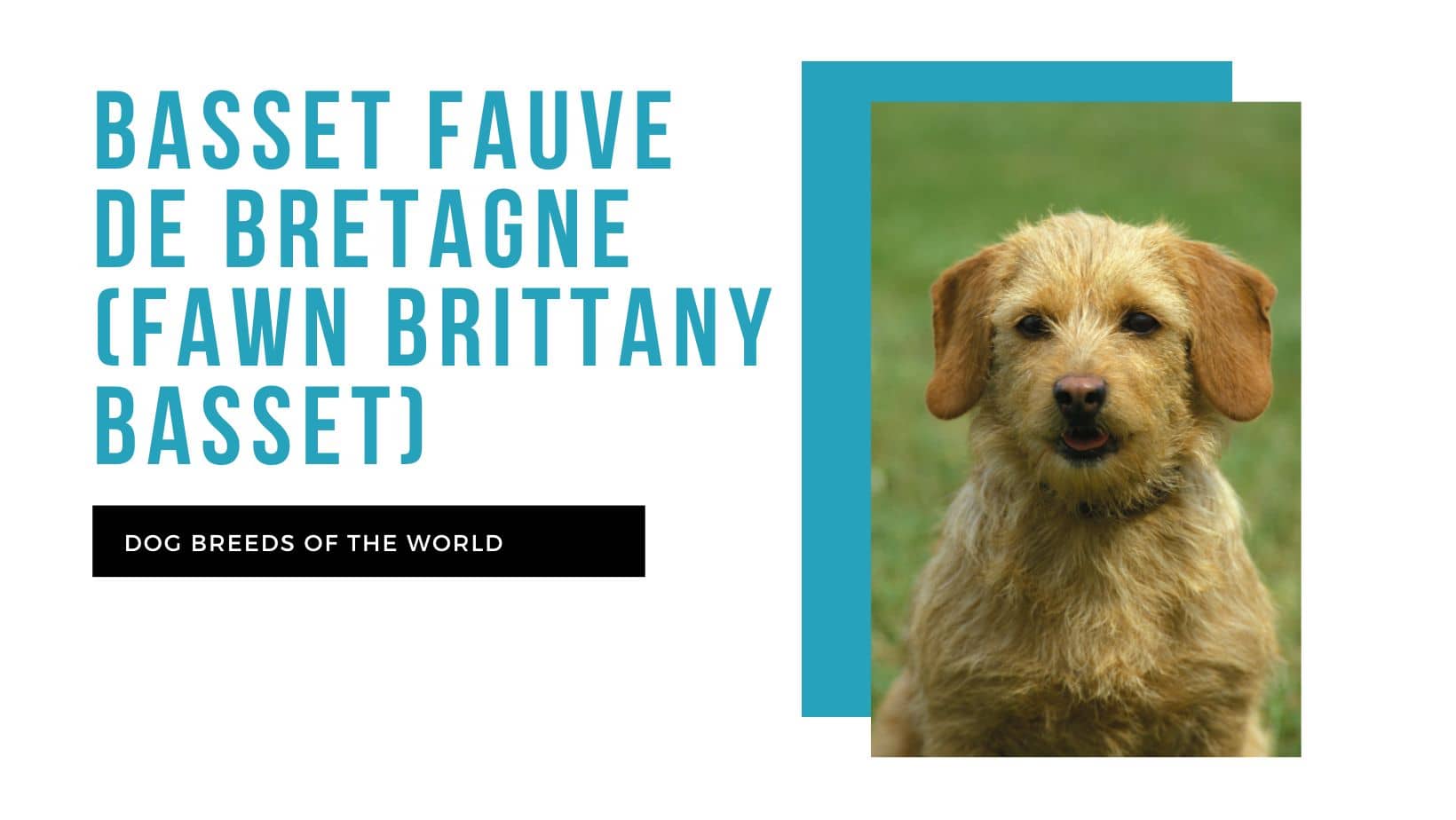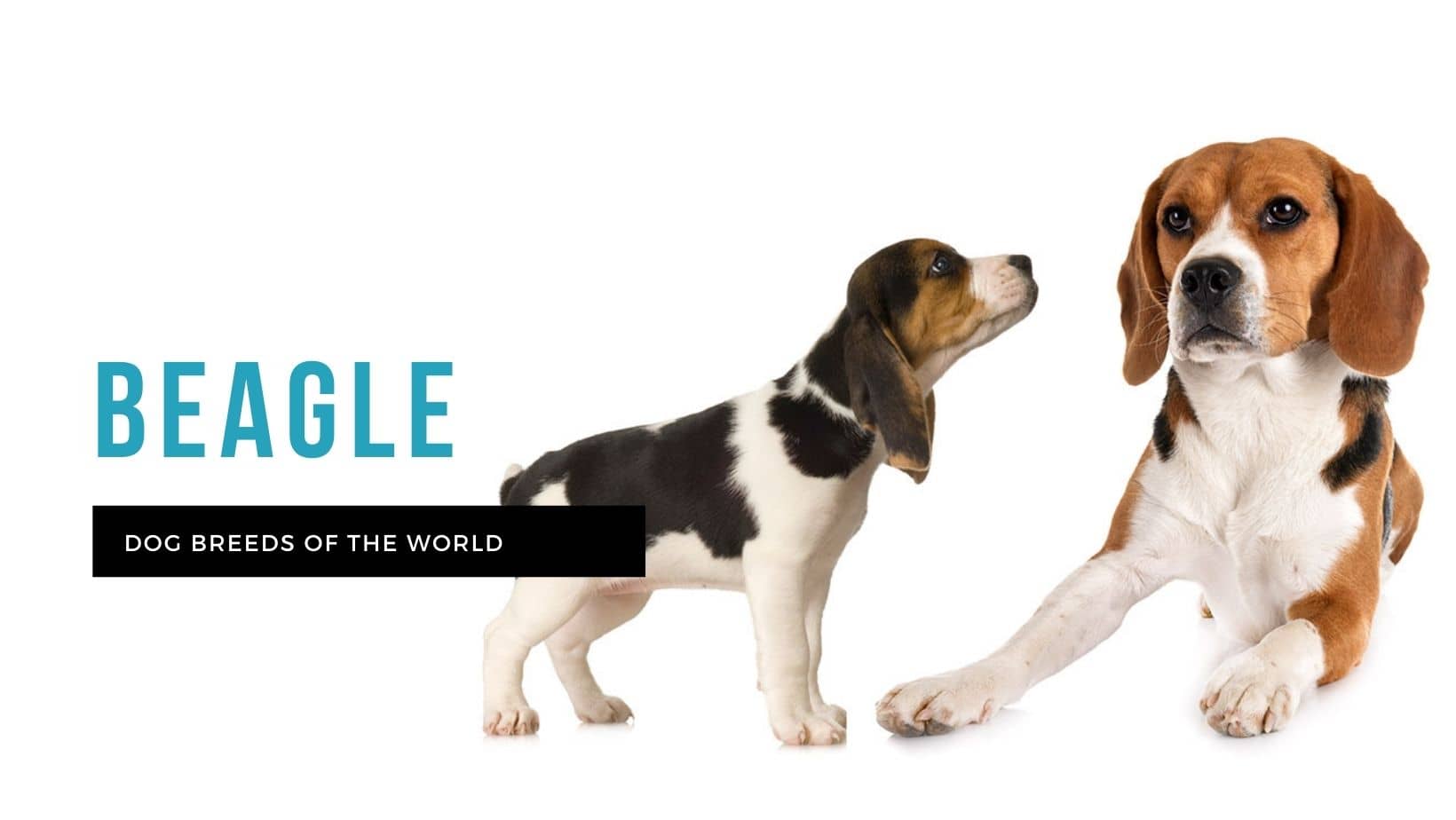
The medium-sized tri-colour beagle was originally bred as a scent hound for hares, foxes and other wild creatures, but this merry, highly sociable and energetic breed has become a firm favourite in active families who have the stamina to keep up with his busy-ness.
The beagle’s small size, short coat and happy temperament make him a lovable companion, but since he is ruled by his nose and is very determined, he can get up to all sorts of mischief.
History
The beagle is an ancient English breed of dog, and while his true origins are unknown, in medieval times the name ‘beagle’ was given to smaller hound breeds. In the middle of the 11th century, William the Conqueror introduced the (now extinct) Talbot hound to England, which is a suspected ancestor of the beagle.
While small compared to other modern hound breeds, the beagles of the 14th and 15th centuries were tiny and called ‘glove beagles’ because they were minute enough to fit in a gloved hand! They purportedly provided entertainment in court, but were also used in hunting to chase after the hunt when the larger hounds couldn’t fit under dense bush. Their use for hunting was apparently short-lived because they weren’t fast enough and didn’t have the stamina for completing the hunt.
In the 18th century in the UK, the foxhound became more popular as a fox hunter’s assistant, while beagles were developed to hunt rabbits and hares on farmers’ lands. In the mid- to late-19th century, beagles were bred as hunting pack animals and became extremely popular for this in England and the USA. Two breeding lines emerged – that of Reverend Phillip Honeywood, who bred for hunting purposes, and that of Thomas Johnson, who refined the breed to not only be a good hunting dog, but also an attractive one.
In the late 1800s, the American Kennel Club accepted the beagle as a breed at around the same time that the Beagle Club and the Association of Masters of Harriers and Beagles were formed in the UK. Since then, the beagle has been developed as a uniform breed and is very popular in the west.
Temperament
The beagle is often described as merry – an apt description for this happy, friendly and active breed. His cute face and big ears and eyes give him a look of enthusiasm that makes him very attractive as a furry friend. Bred as pack animals, beagles get along well with other friendly dogs and don’t have a bone to pick with anyone. The beagle is curious, brave and intelligent – traits that make him an adventurous companion, but which can also get him into trouble if he’s not kept in check.
The beagle will bark when approached by a stranger, but they can easily be won over, so while they may make good watchdogs, they are not keen protectors. Since beagles love the company of others – human and animal – they should not be left alone or they may suffer from separation anxiety, which can make them particularly destructive. With his genetic makeup firmly entrenched as a scent hound, the beagle is ruled by his nose, which controls his brain. Whatever beagle owners do to train and enjoy their dogs, it must be done with the persuasion of food firmly in hand because the moment the beagle catches onto another scent, his attention is gone.
Health
Being small to medium-sized dogs, beagles live fairly long lives, but as with many pure breeds, they are predisposed to certain genetic conditions. In beagles, these conditions can be related to the immune system, the skeleton, the eyes, brain, endocrine system and joints. Common beagle afflictions include:
- hip dysplasia
- arthritis
- intervertebral disc disease (resulting in compression of the spinal cord)
- epilepsy (manageable with medication)
- hypothyroidism (with other complications)
- beagle dwarfism
- eye problems like cherry eye, glaucoma, progressive retinal atrophy (PRA), distichiasis
- patellar luxation
Exercise Requirements
The beagle is a busy body. His nose can lead him on the wildest adventures and while he’s busy following an interesting scent, he won’t hear you trying to call him back! Beagles are difficult to train in obedience tasks because they are so easily distracted by their noses, so as long as they are working with their noses, they are excellent at what they do. For instance, don’t expect your beagle to win the agility championships, but put him to work as a sniffer dog and he will very likely excel.
Beagles are very stubborn and independent, so they need plenty of obedience training and strong leadership from an early age. To succeed, beagle owners will need to give their dogs lots of food rewards to positively reinforce good behaviour. Many beagle owners report housetraining to be a difficult task that takes a long time.
Since beagles were bred to sniff and chase wild animals, they have a tremendous amount of stamina. This doesn’t automatically mean owners need to keep their beagles endlessly active until they are tuckered out, but that their exercise should be proactive and consistent – at least an hour a day of play and interaction. It’s not enough to simply let a beagle out into the yard – they love company and focused attention. As much as they love to explore and go on adventures, beagles also love lazy snoozes, and if this becomes a habit, they can easily gain extra weight. Watch out for obesity.
Following their noses, beagles can easily escape unsecured yards with flimsy fences. They have also been known to tunnel in order to pursue an enticing scent. Owners must microchip and tag their beagles, and ensure their fence or wall is deep enough and high enough to deter escape. Beagles must always be kept on a leash because when they chase after an alluring scent, recall is near impossible.
Grooming Requirements
Beagles usually come in tricolour coats with a dark saddle pattern on their back, or their coat colour is red and white. Their coats are short, but dense and weather resistant, and they are moderate shedders. They grow thicker coats in winter, so there’s quite a bit of shedding when the seasons warm up again.
Easy to groom, beagles need a weekly brush with a short-bristled brush or a grooming glove, and their bathing needs are infrequent (unless they have rolled in the delightful scent of poop or dead things).
Beagles’ big, dropped ears mean they can harbour bacteria in their ear canals. It will work wonders to check their ears regularly and to clean them if there is any odour.
Ratings
Friendliness to other pets
Friendliness to strangers
Behaviour towards children
Statistics
| Size |
Medium |
| Type |
Hound group |
| Average adult weight |
10.5 kg |
| Average adult height |
38 cm |
| Average life span |
13 years |
| Breed family |
|
| Area of origin |
England |
Gallery
Product suggestions
Similar breeds


